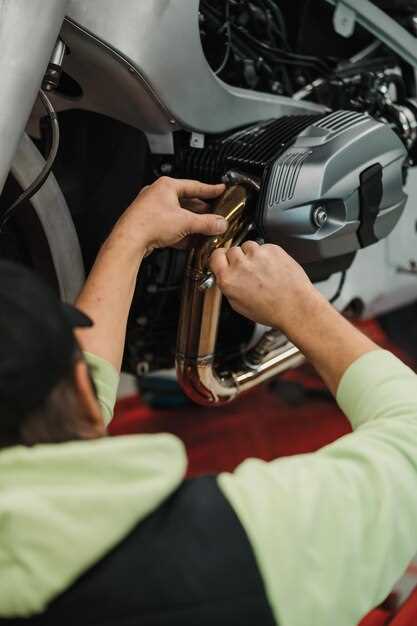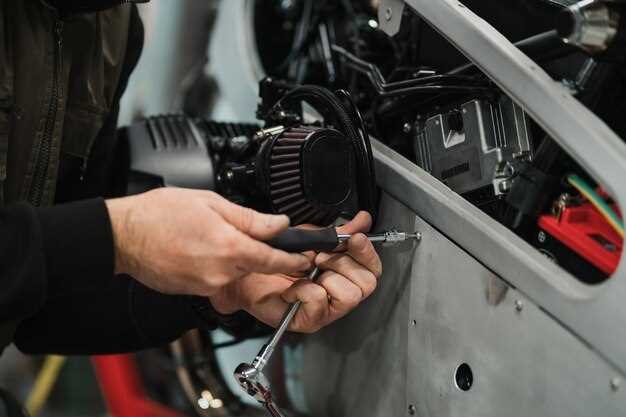
How to Choose the Right Racing Exhaust System
- George Harris
- 0
- Posted on

When it comes to optimizing your vehicle’s performance, selecting the right racing exhaust system is paramount. This critical component not only enhances the horsepower and torque of your car but also significantly impacts its sound and aesthetics. With various options available, understanding the different types of exhaust systems and their benefits becomes essential for passionate car enthusiasts seeking to maximize their vehicle’s potential.
A well-designed exhaust system improves exhaust flow, reducing back pressure and allowing for smoother engine operation. This leads to faster acceleration and improved throttle response. Moreover, the resonance and sound produced by a racing exhaust can create an exhilarating driving experience that many enthusiasts cherish. Therefore, knowing what to look for is crucial when diving into the world of racing exhaust systems.
In this article, we will explore key factors to consider when choosing a racing exhaust system, including material types, design configurations, and legal considerations. By the end, you will have a comprehensive understanding of how to select an exhaust system that not only meets your performance needs but also aligns with your personal preferences and driving style.
Understanding Material Options for Racing Exhaust Systems

Choosing the right material for a racing exhaust system is crucial for optimizing performance, weight, and durability. The primary materials used in racing exhaust systems include stainless steel, mild steel, titanium, and carbon fiber, each offering distinct advantages and disadvantages.
Stainless steel is one of the most popular choices due to its excellent resistance to corrosion and rust. It offers a good balance of strength and weight, making it suitable for high-performance applications. There are different grades of stainless steel, with 304 and 321 being the most common. Grade 304 is more affordable, while grade 321 offers better heat resistance, which is beneficial in racing environments.
Mild steel is another option, often used in budget-friendly exhaust systems. It is lighter than stainless steel and can offer better sound quality. However, it has a lower resistance to corrosion, which can lead to rust over time, especially in wet conditions. Mild steel exhausts are more suitable for temporary or less demanding racing applications.
Titanium is an advanced material favored in professional racing due to its exceptional strength-to-weight ratio. It is significantly lighter than stainless and mild steel, providing a substantial performance boost by reducing the overall weight of the vehicle. However, titanium is also more expensive and requires specialized welding techniques, which can increase installation costs.
Carbon fiber is becoming increasingly popular among high-end racing teams. It offers unparalleled weight savings and unique aesthetic appeal. Nevertheless, carbon fiber exhaust systems are typically less common due to their high cost and the challenges involved in fabrication. They also require careful handling to prevent damage.
In summary, the choice of material for a racing exhaust system directly impacts performance, durability, and cost. When selecting the best option, consider factors such as intended use, budget, and weight reduction goals to make an informed decision that will enhance your racing experience.
How to Match Exhaust System Specifications with Your Engine

Choosing the right exhaust system for your vehicle requires a thorough understanding of your engine’s specifications. To begin, assess the engine type, whether it is naturally aspirated or turbocharged. Naturally aspirated engines typically benefit from an exhaust system designed for high flow at lower RPMs, while turbocharged engines require a system that can handle increased pressure and improve turbo response.
Next, consider the engine displacement. Larger engines often need a more expansive exhaust system to efficiently expel exhaust gases. Determine the diameter of the exhaust pipes; a larger diameter can improve performance by reducing back pressure but must be balanced against the tuning characteristics of your engine. A pipe that is too large can lead to a loss of torque in lower RPMs.
Evaluate your engine’s power band. Exhaust systems are usually designed to optimize performance at certain RPM ranges. If you know your engine’s peak power and torque RPMs, choose an exhaust system that enhances these areas. Systems designed for peak performance might sacrifice low-end torque, so understand where you want to maximize power.
Weight is another consideration. Lighter exhaust systems can enhance performance by reducing overall vehicle weight, while also improving handling. Look for materials such as titanium or high-grade stainless steel which provide durability without adding excessive weight.
Sound characteristics are also essential when matching exhaust systems to engines. Each system produces a unique tone, and certain sound profiles may be preferable depending on personal taste and intended use (e.g., street vs. track). Ensure the system complies with local noise regulations.
Lastly, compatibility with existing components like headers and catalytic converters is crucial. Upgrading the exhaust system without considering these components may lead to inefficiencies. If you are replacing an existing system, ensure the new one matches or enhances the flow characteristics of your current setup.
In summary, selecting the right exhaust system involves careful analysis of engine type, displacement, power band, material, sound, and compatibility with existing parts. Each factor plays a significant role in how effectively the exhaust system can enhance your vehicle’s performance.
Evaluating Sound Levels and Performance Gains from Exhaust Upgrades
When considering an exhaust system upgrade, evaluating the sound levels and performance gains is crucial. A well-designed exhaust can transform the driving experience, providing both auditory pleasure and enhanced performance.
Sound levels are typically measured in decibels (dB). Different exhaust systems produce varying sound profiles, influenced by factors such as pipe diameter, material, and muffler design. Performance-oriented systems may generate a deeper, more aggressive tone that signals a car’s capabilities. However, it is essential to strike a balance; excessively loud exhausts can attract unwanted attention, lead to legal issues, and may be uncomfortable during daily driving.
To evaluate sound levels, potential buyers should listen to exhaust notes through sound clips or in-person demonstrations. This can provide insight into the system’s characteristics–whether it produces a refined growl or an overwhelming roar. Additionally, consider the overall vehicle context, as the engine type and vehicle model can greatly influence how the exhaust sounds while driving.
Performance gains from exhaust upgrades are typically measured through improvements in horsepower and torque, as well as overall efficiency. A high-flow exhaust system reduces backpressure, allowing exhaust gases to exit the engine more freely. This can lead to better throttle response and increased power output. However, it’s crucial to pair the exhaust with other performance modifications such as intake systems or remapping the engine control unit (ECU) to maximize gains.
Quantifying performance improvements often involves dyno testing, which provides objective data on horsepower and torque before and after installation. Owners should seek systems that have documented performance gains and reviews from credible sources. This data supports claims of increased power, allowing for informed decision-making.
Ultimately, the right exhaust system should enhance both the sound and performance of the vehicle, aligning with the owner’s preferences and driving style. Thorough research, listening to sound samples, and evaluating performance data will aid in selecting an exhaust that elevates both enjoyment and capability.
